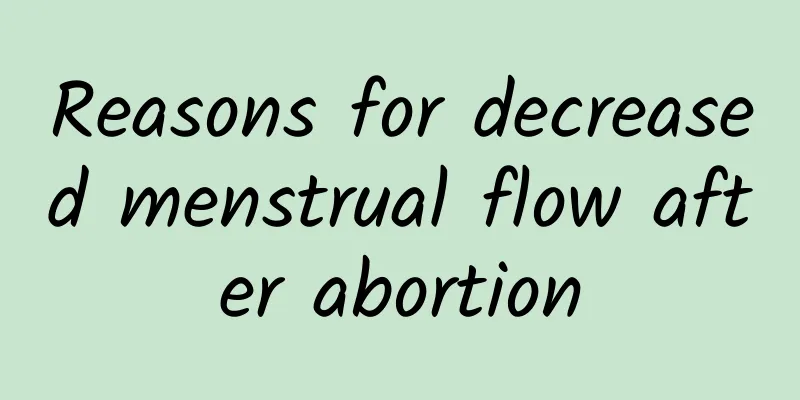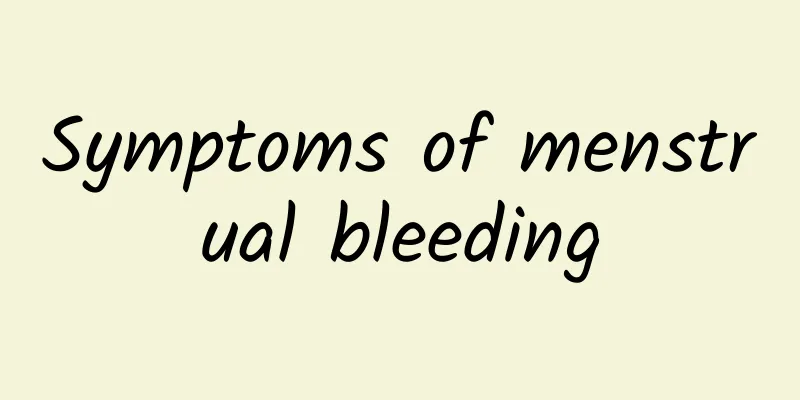Reasons for decreased menstrual flow after abortion

|
There are many reasons why patients have less menstrual volume after abortion. After abortion, patients may have insufficient endometrial hyperplasia due to endometrial damage, uterine cavity adhesions, endocrine system dysfunction, and incomplete curettage during surgery, which leads to reduced menstrual volume. Damage to the uterine lining Excessive curettage during abortion surgery or multiple abortions can cause damage to the patient's endometrium, resulting in complete or partial loss of the endometrium in the uterine cavity, which can prevent the endometrium from exfoliating cyclically normally and cause scanty menstruation after abortion. Uterine adhesions The endometrium is damaged during abortion and curettage, and adhesions may occur after the operation. If adhesions occur in the patient's uterine cavity, there may be different manifestations depending on the degree of adhesion. A large adhesion range may cause amenorrhea, while a small adhesion range may cause less menstrual flow after abortion. Endocrine disorders After abortion, patients may have endocrine system dysfunction, hypopituitarism, insufficient ovarian estrogen secretion, insufficient endometrial hyperplasia, and thin endometrium, resulting in less bleeding during menstruation and less menstrual flow. Long-term use of contraceptives can inhibit pituitary function, resulting in insufficient estrogen secretion and reduced menstrual flow after abortion. Incomplete curettage A small number of patients may experience amenorrhea or scanty menstruation after miscarriage due to incomplete curettage and residual placenta and other tissues in the endometrium. In this case, another curettage can restore the patient's menstruation to normal. |
<<: Attention should be paid to daily care of patients after abortion
>>: Artificial induction is more suitable for mid-pregnancy
Recommend
What is the difference in the age of menopause between men and women?
Generally speaking, women will enter menopause be...
How many days is the best time to have an abortion?
There is generally no such thing as the best time...
What causes uterine fibroids?
Uterine fibroids are a common benign tumor that o...
How to eliminate ovarian cysts in pregnant women? What are the hazards?
The treatment of gynecological diseases in pregna...
Treatment for bacterial vaginosis
Bacterial vaginosis is a very common gynecologica...
Women should be alert to the precautions after painless abortion
Abortion is a common surgery, and there are sever...
What are the symptoms of pelvic inflammatory disease?
Pelvic inflammatory disease is also a common gyne...
Experts explain how to correctly prevent cervical hypertrophy
In real life, female friends are very likely to s...
Get rid of sugar and fat! Limit sugar intake to 1 gram per kilogram of body weight
Beverages can also pose safety issues if they con...
What should I do if I have severe menstrual irregularities?
What should I do if I have severe menstrual irreg...
Why do unmarried women get uterine fibroids? Can they still have children if they have uterine fibroids?
Uterine fibroids are not only a threat to married...
How should women care after uterine fibroid surgery?
What are the postoperative care methods for uteri...
Onions cannot be eaten with apples, as they may induce thyroid enlargement?
It is April now, and onion season has arrived. Ho...
Help you understand the examination items for dysmenorrhea
Dysmenorrhea is a common symptom of women during ...
What are the early symptoms of cervical erosion in women? What are the causes of cervical erosion?
Cervical erosion can be divided into mild cervica...









